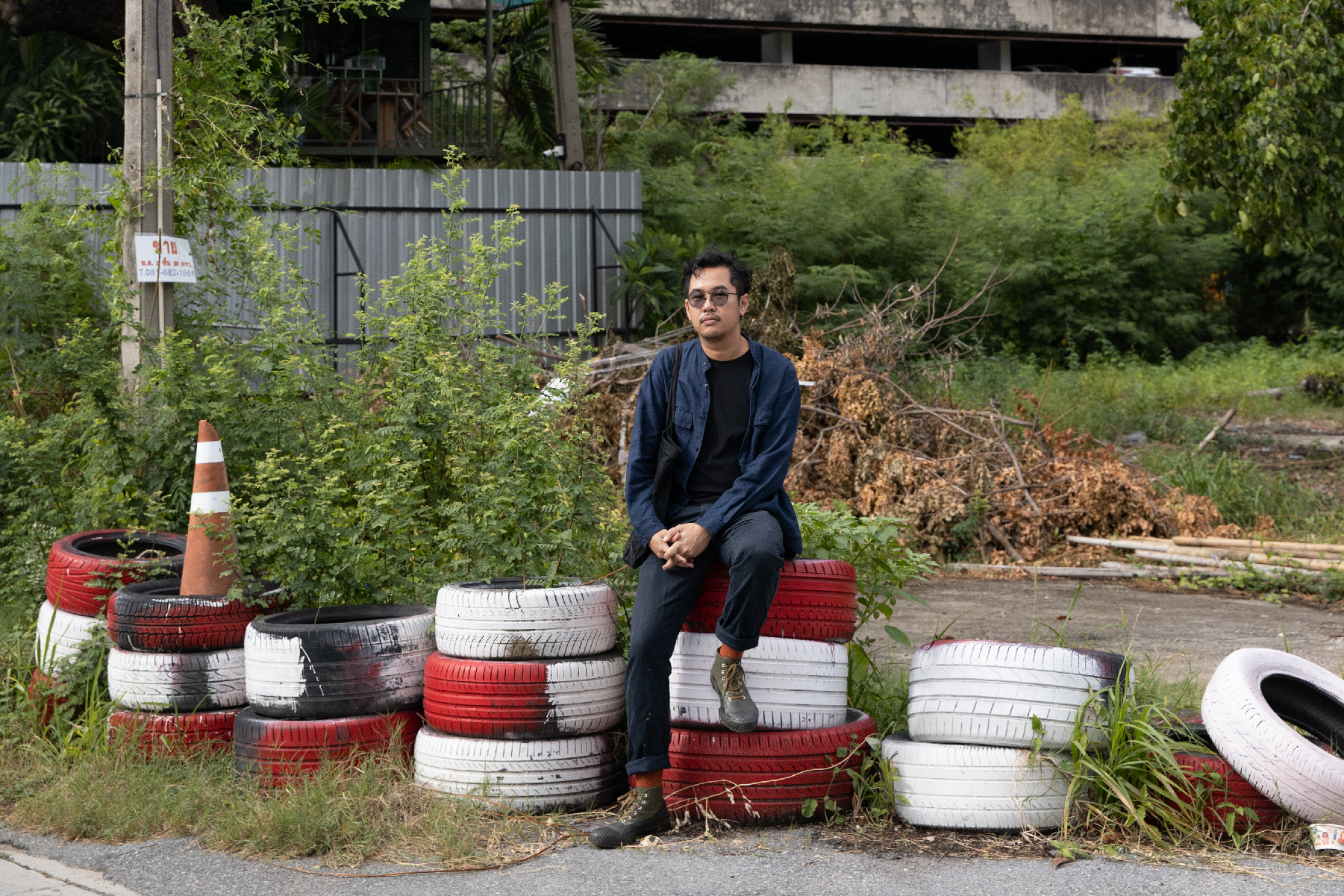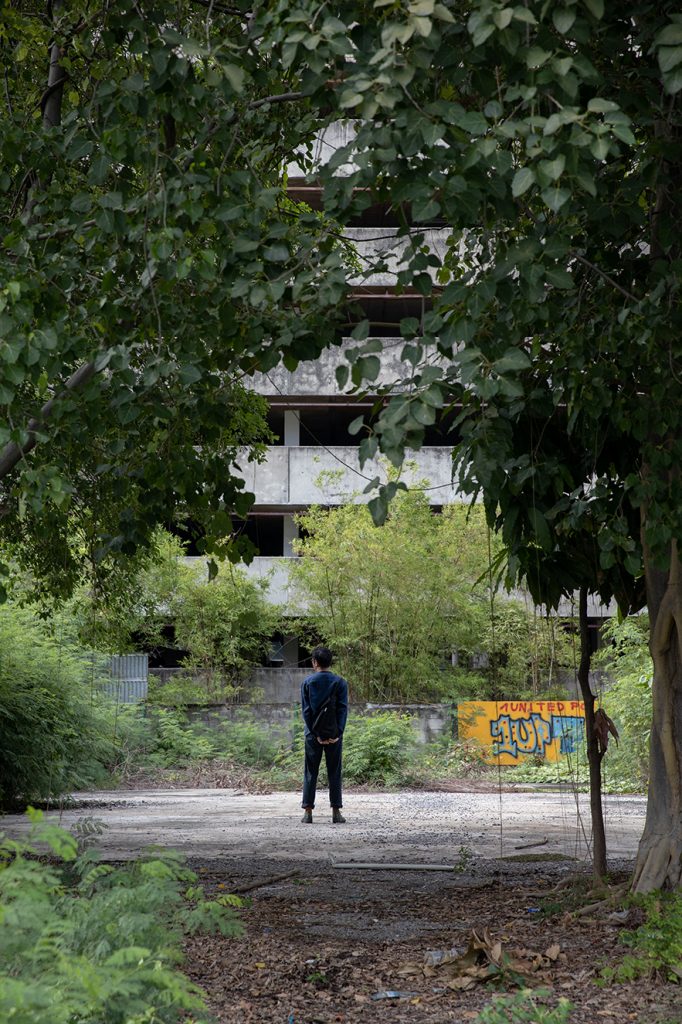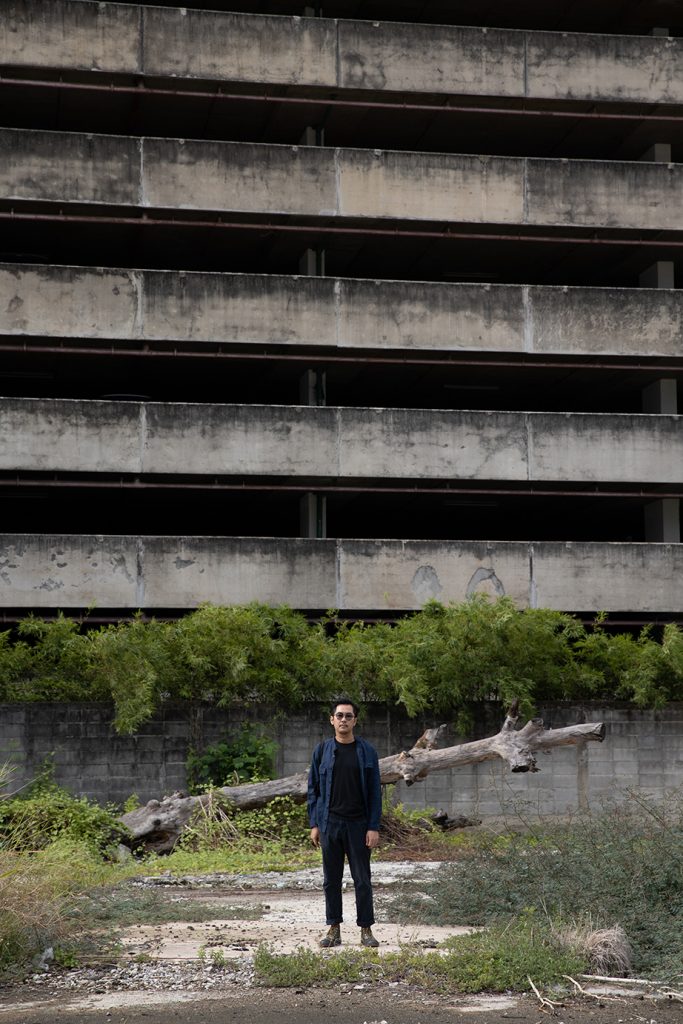ARTIST, FILM LOCATION MANAGER, BOOKSHOP OWNER, THESE ARE THE ROLES THAT WITHIT CHANTHAMARIT IS CURRENTLY TAKING ON
TEXT: NAPAT CHARITBUTRA
PORTRAIT: KETSIREE WONGWAN
PHOTO COURTESY OF THE ARTIST
(For Thai, press here)
Withit Chanthamarit was born in a full-on bureaucratic family and spent his high school life as one of the top students at one of the country’s most prestigious schools, Triam Udom Suksa. As highly academic as the vibe was, this school is where Chanthamarit found a group of friends that got him interested in the art world.
“The guys I was close to were all working on their own short films. I was more of an activity kid and my GPA wasn’t that pretty so I ended up submitting my graphic design portfolio, just because my friends were. And we were all accepted into Bangkok University. I myself got into Communication Arts, majoring in advertising.” Chanthamarit was offered a 4-year scholarship and a sum of monthly allowance if he were to accept the spot. It wasn’t a hard decision to make considering how he would be able to free his parents from the financial burdens his college life would have otherwise brought. “My friends were very determined about what they wanted to do. They already watched Joey’s (Apichatpong Weerasethakul) movies and I was just enjoying the Harry Potter saga. But I’ve always like photography books. I would browse through Thailand Tourism Promotion Organizations (now Thailand Tourism Authority) magazines and thought how great it would be to be a photographer and to travel to so many places.”
But ‘photography’ for him at the time was nowhere near the realm of art (or traveling for that matter). It was all studio work, carrying equipment, setting up lights, hearing the seemingly endless sounds of the flash going off. He spent the last semester of his university life working as an assistant photographer and his first fresh graduate year helping around the studio, getting paid by jobs and making a living by being a graduation photographer.
When the time came, Chanthamarit quit the studio (at one point, he was taking the role as the project manager). The big turning point was the big flood that hit Bangkok in 2011. “I began to realize that I’d actually never been anywhere. With all the gigs canceled due to the flood, I had a chance to meet with Miti Ruangkritya. We actually met through Flickr. There were a bunch of folks on Flickr who would go out and photograph the flooded city at night, and I sort of tagged along.”
Chanthamarit captured the image of his own home after the flood went down (Goin Home, 2011). It was right then when he was starting to see other possible aspects of photography other than its commercial use. After the flood was over, he was called back to the office and helped with a project—an ad promoting support for the flood victims. It was his last job before he took a turn to walk on the path towards the art world. He joined Toom Fab, an artist in residence at Nong Khai province, with a group of artists and curators. “I didn’t have any artistic processes of my own, and they were telling me to try to tell whatever I was feeling. When I returned, I got to work as a behind-the-scenes photographer for the film, 36 by Nawapol Thamrongrattanarit. I think I was standing with one of my feet in filmmaking and the other in art,” Chanthamarit told art4d.
“Angkor Photo Festival was the turning point that really gave me a clearer answer to what photography really is to me. I remember sitting in the class until 9 pm, feeling utterly confused. Someone came up to me and told me that there was no point sitting there, feeling lost, just go out and take some photos and we would talk about it tomorrow. So, I did. I went out in Siem Reap and took some photos.” That ‘going out’ ended up giving birth to ‘The wanderer’ (2012) series. The talk that ensued that day gradually led Chanthamarit to understand himself more and he realized how he had never actually taken himself anywhere outside of Bangkok. His life took place mostly in the rather shoddy suburban Lak Si neighborhood where he would go to school, come home, and was barely allowed to take a walk since his concerned parents were afraid that he would get mugged. “Photography has taken me out more.”
“Since Siem Reap, I spent a greater amount of time out of the house. I was out observing the PDP’s (People’s Democratic Reform Committee) demonstration at Lak Si. It was scary. Being there, I saw how everything worked, and who instigated the situation.” He submitted his ‘Transplantation’ (2014) series for Noorderlicht Photofestival in the Netherlands. The documentary photography series captured the lives of the protesters in different urban public spaces, questioning how the most absurd scenarios (such as a bunker built in front of McDonald’s) are being normalized and were becoming a part of Thai people’s daily life.
Chanthamarit later explains his mentioning of standing on in both the realm of film-making and art as something that has derived from what he needs in order to making a living. Creating art requires a considerable amount of money. Living another life as a behind-the-scene staff, or a part of the film-making process, from a still photographer to the cinematographer of the documentary, ‘Infected Tide’ by Nontawat Numbenchapol in 2013 to his role as the location manager for Prabda Yoon’s film ‘Motel Mist’ in 2016.
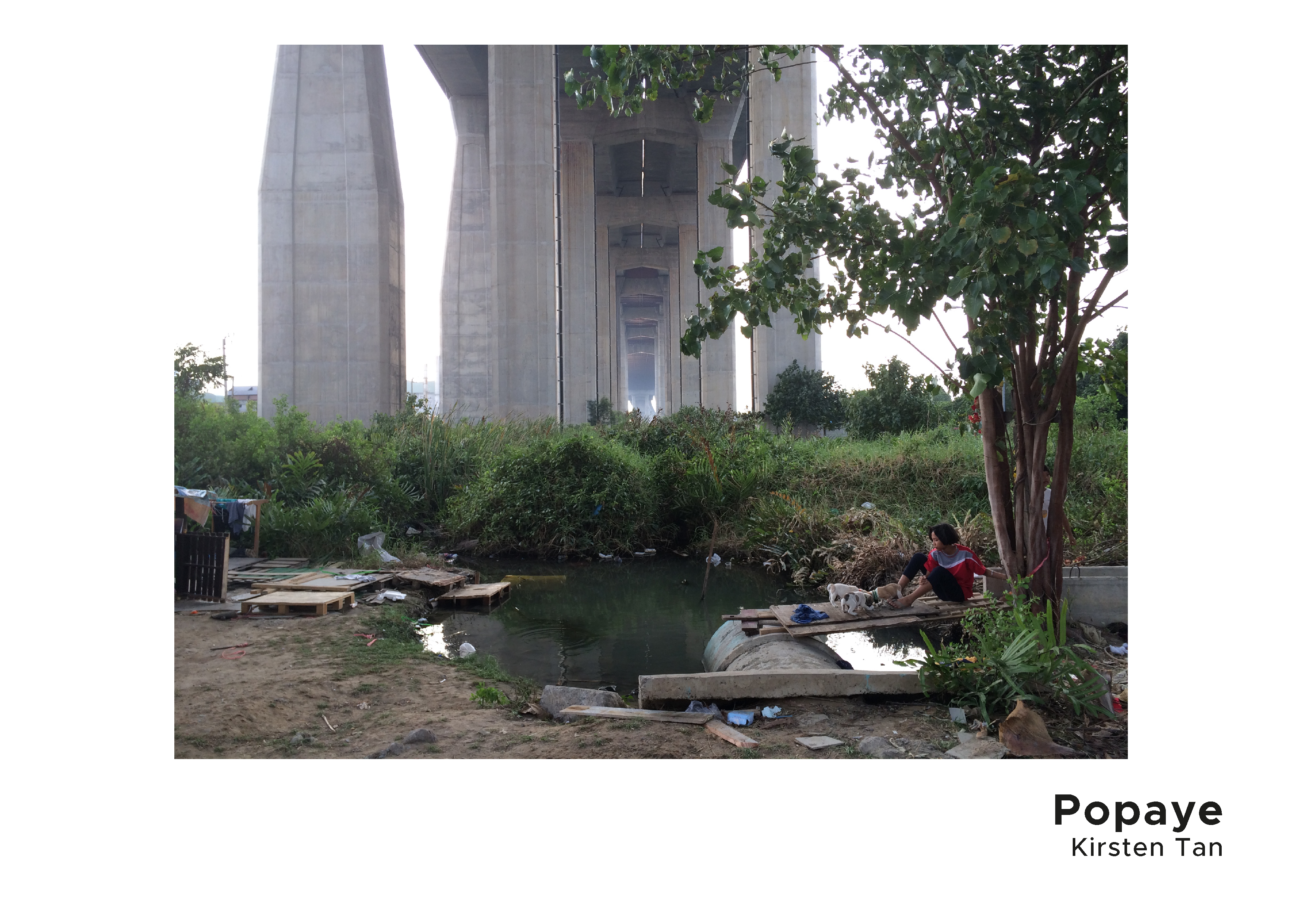
“He said that I should be able to handle the location management because I could envision the scenes and I have enough management skills.” The experience working in project management in studios suddenly came in handy. Chanthamarit told art4d that one of the tasks for his first film, as the location manager, was to find a drive-in love motel. It was different considering he was practically inexperienced in location scouting. He searched on webboards and stumbled upon a list of drive-in love motels throughout Bangkok. “The approach I took was like, ‘My brother was getting married, and we need to throw him a party, would you mind if I take a look at the space.’” Another trick was to go in with a female staff and ask to see the rooms. He finally discovered a large drive-in love motel (approximately 100 rooms) in a suburban area of Bangkok. “I made an offer to rent two of their floors to shoot a film with a promise that we wouldn’t bother their guests, so they agreed.”
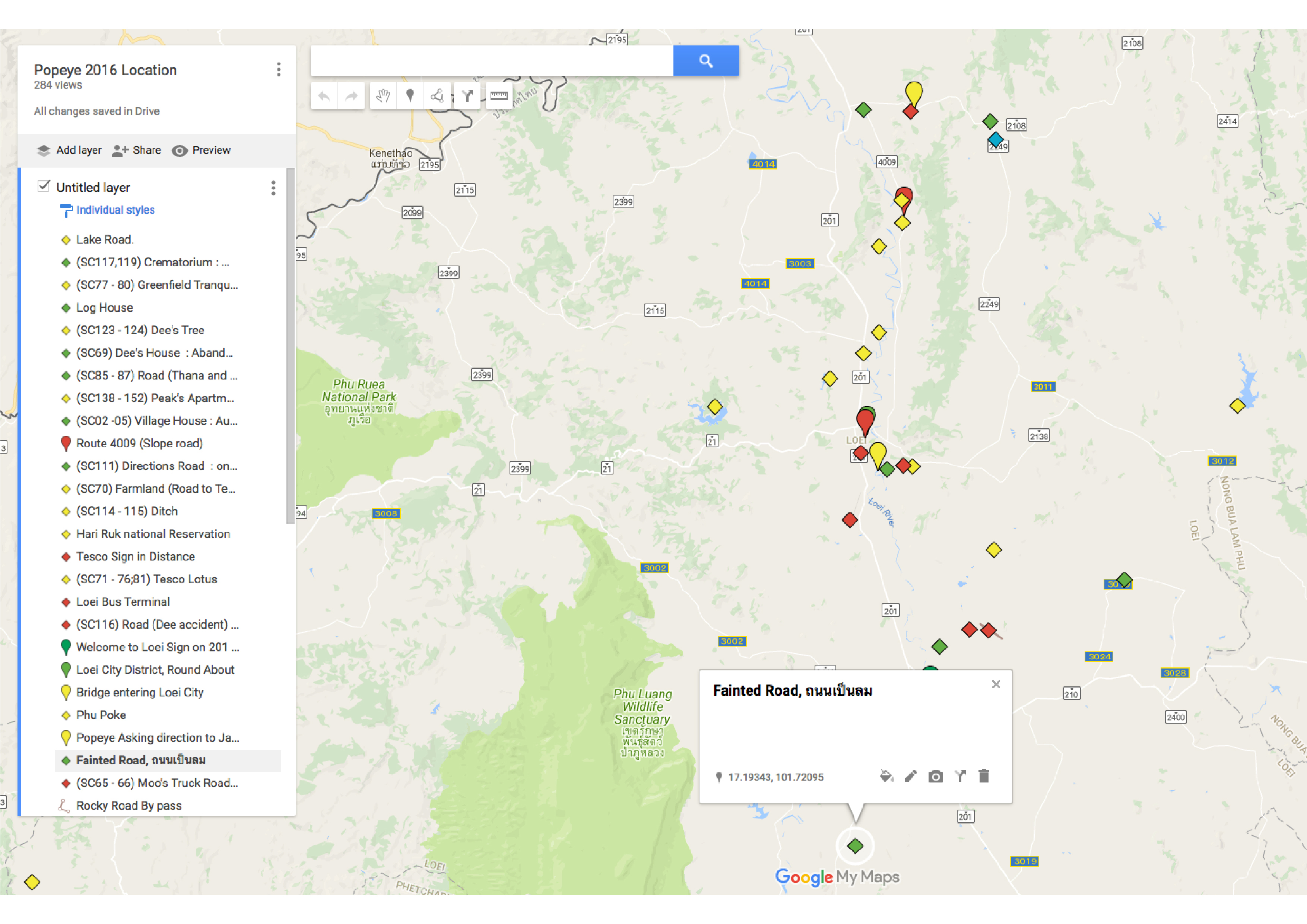
His next project was ‘Pop Aye’ (2017), a film of a much bigger scale and bigger budget. The challenge that came with the project was the director’s (Kirsten Tan) demand for an image of elephants roaming the streets of Bangkok, despite that being somewhat far from the current reality. “I had to provide them the right set of reality. In most people’s understanding, when they think of elephants, they think of places like Surin or Chiang Mai, but with the limited budget, Chiang Mai was out of the question because the cost would be too high. Surin wouldn’t fit, too, because the screenplay specifically said the set is a mountainous town, I did some research to find whether there would be a location where there was a community of elephant mahouts with the landscape we were looking for. Finally, we settled on Loei.”
Pop Aye is a road movie, which means that the next thing he would have find was the route that the protagonist and the elephant took to travel on foot from Bangkok to Loei. Certainly, using the main highway like Mittraphap Road was almost impossible since the setting in the screenplay was nothing near to how the highway was looking. When doing location scouting, Chanthamarit would leave his DSLR camera at home and look at Google Street to help mark the points before using his old iPhone as a tool where he would snap pictures that would later be used for the presentation with the director. The upside of the iPhone is that it is able to record the locations, streets, fields, ponds, etc. that he came across along the way. “It’s very fun to be able to go out and travel. But the management wasn’t so fun, though.” For Chanthamarit, what’s tiring about his role as the location manager is having to deal with the locals, the authorities, and police when there’s a need to close a road, handling people when the shooting affects their lives. Everything has to be done within a limited time and cost.
The next projects he was a part of were the ‘PLANETARIUM’ episode by Chulayarnnon Siriphol and ‘CATOPIA’ episode by Wisit Sasanatieng of the ‘Ten Years Thailand’ (2018) anthology film, with some fun stories and tidbits which, unfortunately, cannot be published here. What Chanthamarit is currently doing is not only something he likes but also makes surprisingly good money, it is his Vacilando Bookshop. The shop was conceived from his interest in works of other photographers from around the world. The location scouting has taken him to countless second-hand bookshops countrywide, as his collection of rare books continues to grow and eventually became big enough for Chanthamarit to open his own bookshop.
He considers himself as someone who has been working within the process of film industry, but such a process sometimes leads him to create his own personal projects such as the book of photography titled ‘LOEI,’ which documents the three months period he spent scouting locations for the movie ‘Pop Aye.’ He didn’t forget to mention his restless artistic drive and his plan for using the information and experiences he had from location scouting to create his own artwork in the future.

